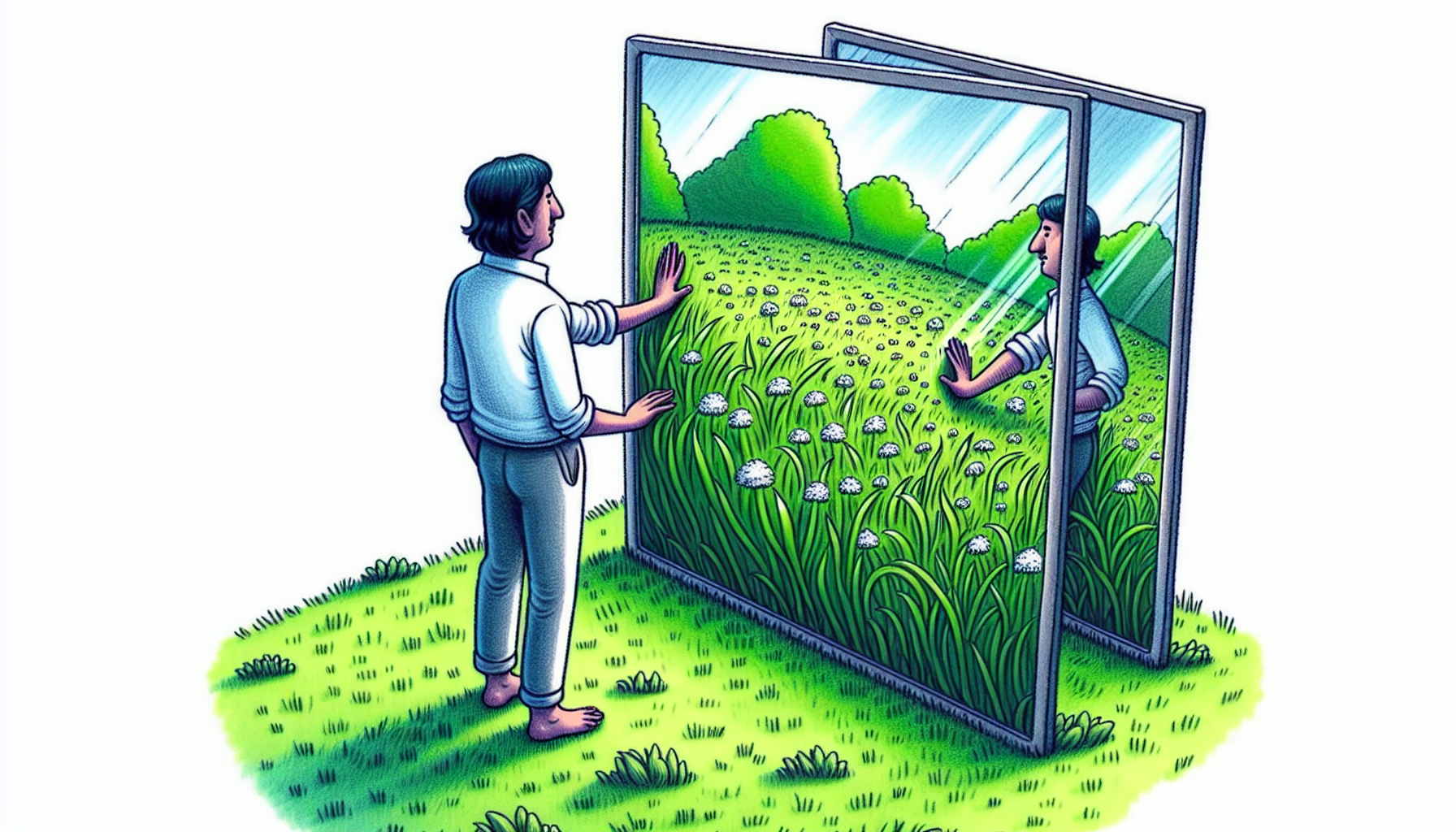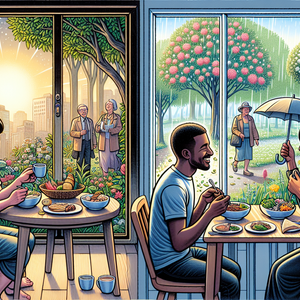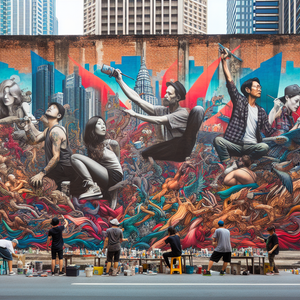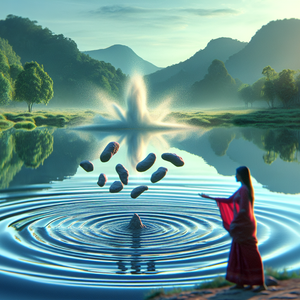AI & Big Data: Unlocking Innovation in Art, Music, and Storytelling

Art has always evolved alongside technology, from the invention of perspective in the Renaissance to the use of photography in modern art. Today, AI is proving to be an invaluable collaborator for artists, pushing creative boundaries and generating entirely new forms of visual expression. Generative AI models, such as OpenAI’s DALL·E and MidJourney, have demonstrated an unprecedented ability to create original artworks that merge styles, cultural motifs, and innovative techniques. For example, the 2018 sale of Edmond de Belamy, an AI-generated painting, marked a turning point in the art world. Produced by a machine learning algorithm trained on thousands of historical portraits, the artwork sold for $432,500 at Christie’s, igniting debates about the nature of creativity itself. Was it the algorithm that created the piece, or the human programmers who designed and curated the data? Regardless of the answer, this event underscored the potential of AI to operate as a creative partner, rather than a replacement for human artists. Beyond traditional art forms, AI is influencing other visual mediums. Architects use AI-driven design tools to conceptualize futuristic structures, while fashion designers employ algorithms to predict trends and create avant-garde collections. By analyzing enormous datasets, AI can identify patterns and possibilities that humans might overlook, making it an indispensable tool for creators looking to innovate.
Music in the Age of Algorithms
The music industry has also embraced AI and big data, with both technologies revolutionizing how music is composed, produced, and consumed. AI-powered tools like AIVA (Artificial Intelligence Virtual Artist) and Amper Music can compose everything from ambient soundtracks to full orchestral symphonies. These systems learn from vast libraries of music, identifying patterns in melody, rhythm, and harmony to create compositions that evoke emotion and imagination. Taryn Southern, a pop musician, exemplifies how artists are using AI to push creative boundaries. Her album I AM AI was co-composed with AI tools like IBM Watson Beat and Amper Music, which helped her experiment with genres, tempos, and moods. Rather than replacing her artistry, these tools acted as collaborators, enabling her to refine and expand her musical vision. Big data also plays a significant role in how music is consumed. Platforms like Spotify and YouTube use machine learning algorithms to analyze user behavior and offer personalized recommendations. By understanding listener preferences, these platforms not only enhance user experience but also help artists connect with their audiences more effectively. In this way, AI and big data are democratizing access to music, giving both creators and listeners more opportunities for discovery and connection.
Storytelling Meets Machine Learning
Storytelling, one of the oldest forms of human expression, is also being revolutionized by AI and big data. Natural Language Processing (NLP) models like OpenAI’s GPT series have demonstrated the ability to craft compelling narratives, poems, and even screenplays. These models analyze immense datasets of text to learn the intricacies of language, plot structure, and character development. A notable example of AI-driven storytelling is 1 the Road, a novel co-written by an AI trained on the works of Jack Kerouac. The book captures the stream-of-consciousness style of its human co-author, showcasing how AI can emulate and expand on traditional forms of storytelling. Similarly, filmmakers are leveraging AI to analyze audience preferences, predict the success of scripts, and even generate plot ideas. Big data plays a complementary role in storytelling by helping creators understand their audiences. Streaming platforms like Netflix and Amazon Prime use analytics to recommend content and greenlight projects tailored to viewer preferences. For instance, Netflix’s hit series House of Cards was commissioned based on insights from big data, which revealed a strong interest in political dramas and the actor Kevin Spacey. Such data-driven decision-making ensures that stories resonate deeply with audiences, bridging the gap between art and consumer demand.
The Ethical Intersection of Creativity and Technology
While the creative potential of AI and big data is undeniable, their rise also raises important ethical considerations. For instance, who owns the rights to AI-generated art or music? The programmer, the user, or the AI itself? Moreover, AI systems are only as unbiased as the data they are trained on. If the training data includes historical or cultural biases, these prejudices can inadvertently shape the output, perpetuating stereotypes or excluding marginalized voices. Transparency and accountability are essential to addressing these challenges. Artists, technologists, and policymakers must collaborate to establish ethical guidelines that protect creativity while ensuring fairness and inclusivity. The goal should not be to replace human creativity but to augment it, using AI and big data as tools to inspire and enhance artistic expression.
The King and Queen of Emerging Skill Sets
The fusion of AI and big data has made these technologies the king and queen of emerging skill sets in the creative industries. Just as proficiency in traditional tools like cameras or paintbrushes was essential for past generations of artists, today’s creators must learn to navigate AI-driven platforms and data analytics. These skills are not only valuable for producing art but also for understanding audience behavior, predicting trends, and shaping the future of creative expression. Educational institutions and industry leaders are recognizing this shift, offering courses and training programs that integrate AI and big data with creative disciplines. By equipping creators with these emerging skill sets, we are preparing them to thrive in a world where technology and artistry are increasingly intertwined.
AI and big data are not merely tools of computation; they are catalysts for a creative renaissance. By enabling artists, musicians, and storytellers to explore new forms of expression, these technologies are redefining what it means to be creative in the 21st century. Far from diminishing human ingenuity, they are amplifying it—offering fresh perspectives, expanding creative horizons, and connecting creators with audiences in unprecedented ways. As we look to the future, the collaboration between humans and machines will only deepen, fostering a new era of innovation in art, music, and storytelling. This intersection of creativity and technology is not a threat but an opportunity—a shared canvas where human imagination and computational power come together to shape the cultural landscape of tomorrow.
AI-Powered Creative Technologist
Creative agencies, production studios, and technology companies like OpenAI, Adobe, or Google Creative Lab
Responsibilities
Collaborate with artists, musicians, and writers to integrate AI tools (e.g., generative models like DALL·E or GPT) into creative projects.
Develop custom AI-driven solutions to assist in tasks such as generating artwork, composing music, or building immersive storytelling experiences.
Combine technical expertise in machine learning with an understanding of creative processes and trends in art, music, and media.
Music Data Analyst
Streaming platforms, record labels, and music-tech startups such as Spotify, Universal Music Group, or SoundCloud
Responsibilities
Analyze streaming data, listener behavior, and genre trends to help artists and record labels optimize song releases and marketing strategies.
Leverage machine learning techniques to design recommendation algorithms for music platforms like Spotify, Apple Music, or YouTube.
Provide actionable insights for music production by identifying gaps in the market and predicting the next big sound.
AI Storytelling Specialist
Film studios, game developers (e.g., Netflix, Ubisoft), and AI-focused startups in the entertainment industry
Responsibilities
Use NLP tools like OpenAI's GPT and other generative models to co-create narratives, screenplays, or interactive story-driven experiences.
Collaborate with writers and filmmakers to design AI-driven content tailored to specific audiences based on big data insights.
Ensure ethical use of AI in storytelling by addressing copyright, originality, and bias concerns.
Generative Design Architect
Architectural firms, industrial design companies, and tech-forward organizations like Zaha Hadid Architects or Tesla
Responsibilities
Utilize AI-enabled design software (e.g., Grasshopper, Rhino, or Autodesk Generative Design) to conceptualize and create innovative architectural or product designs.
Analyze large datasets on materials, environmental factors, and user behavior to inform sustainable, functional, and aesthetic design decisions.
Work with interdisciplinary teams to push the boundaries of design by incorporating cutting-edge AI tools.
Ethical AI Policy Advisor for Creative Industries
Government agencies, think tanks, and companies at the intersection of AI and media (e.g., Meta, Microsoft, or AI ethics organizations)
Responsibilities
Develop frameworks and guidelines for the ethical use of AI and big data in art, music, and media production.
Address issues such as copyright, intellectual property, and bias in AI-generated content while balancing innovation and fairness.
Collaborate with technologists, policymakers, and creators to ensure transparency and accountability in the AI-driven creative process.


